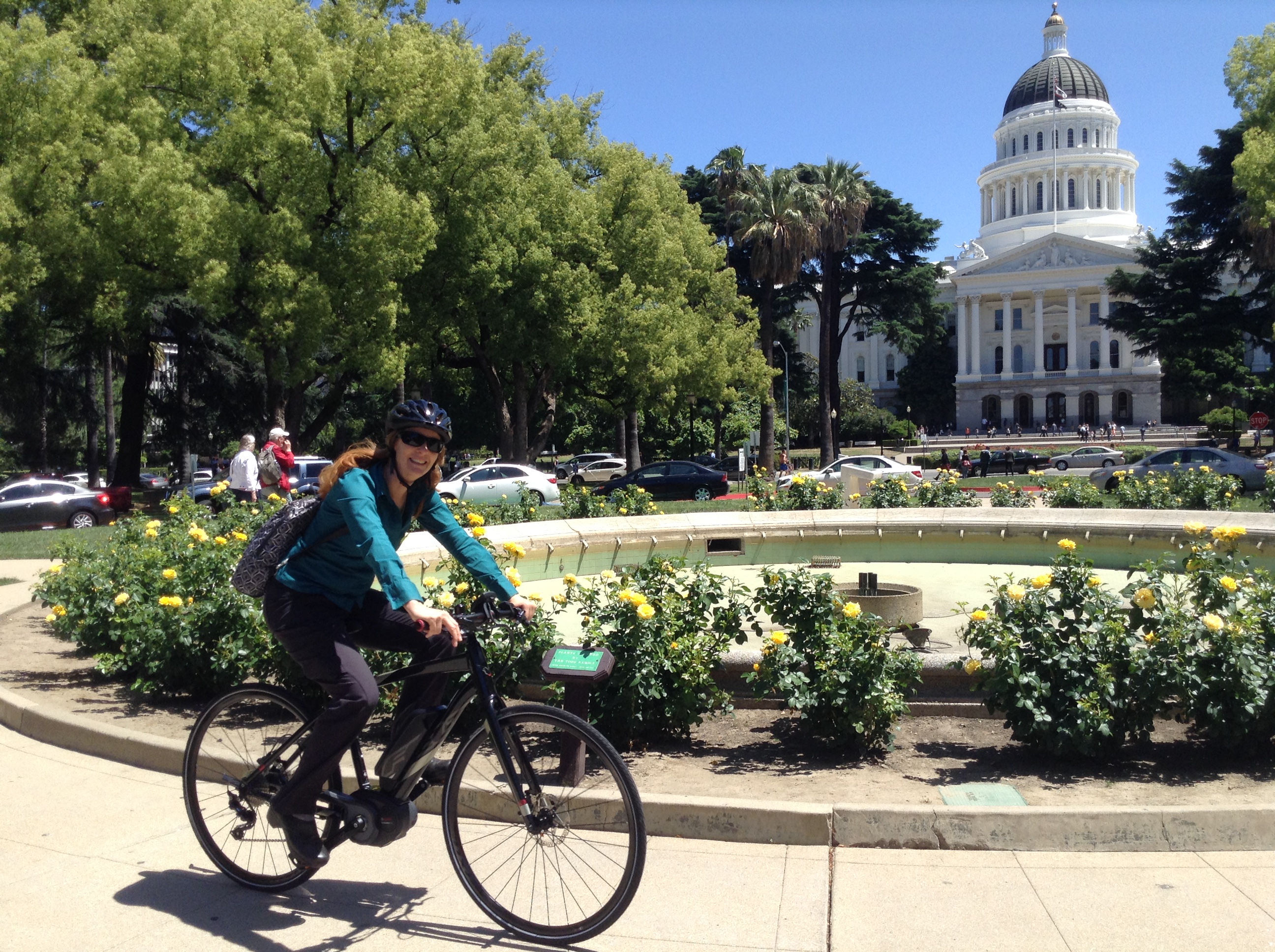Note: GJEL Accident Attorneys regularly sponsors coverage on Streetsblog San Francisco and Streetsblog California. Unless noted in the story, GJEL Accident Attorneys is not consulted for the content or editorial direction of the sponsored content.
Walk San Francisco sent a busload of safety advocates to Sacramento on Wednesday to talk to legislators in support of Assemblymember Laura Friedman's A.B. 645, another try at creating a pilot automated speed enforcement program. And last weekend, Streets Are For Everyone (SAFE) launched a petition in support of the bill in conjunction with a protest in Boyle Heights over the serious injury of a young man who was hit by a speeding motorcyclist.
The petition is aimed at Assemblymember Chris Holden, who chairs the Assembly Appropriations Committee, and Assembly Speaker Anthony Rendon. Several previous versions of the bill were stopped in the black box process of the Assembly Appropriations Committee. That is, the committee refused to allow the bills to move forward, but without explaining why or even recording yay or nay votes on it.
Those bills include last session's A.B. 2336, also from Assemblymember Friedman, and A.B. 550 and A.B. 342, both from former Assemblymember David Chiu.
The meeting with Assemblymember @mgipson2014 is one we will not forget.
— Walk San Francisco (@walksf) April 12, 2023
Assemblymember Gibson’s 3-year-old son was the victim of a hit-and-run. He shared his grief with @BayAreaFSS members who have also lost children in traffic crashes and pledged his support of #PassAB645. pic.twitter.com/5OB83q0m6V
This year's bill, A.B. 645, has multiple co-authors, including Assemblymember Phil Ting and Senator Scott Wiener, as well as Assemblymembers Marc Berman, Matt Haney, Alex Lee, and Buffy Wicks.
There is abundant evidence that speed cameras work - that they dramatically cut speeding and reduce crashes.
In the face of precipitous increases in the rates of pedestrian and bicyclist injuries and deaths, this is a very much desired outcome. But opponents have cited a variety of problems with all automated enforcement systems, including privacy concerns and the charge that these programs are used to generate revenue rather than end unsafe driving practices.
Automated speed cameras are also put forward as a way to solve inequities in traffic enforcement, by removing human prejudice from the equation.
However, results from some existing programs show that this last argument may not be so clear-cut. That is, there is evidence that low-income and people of color tend to receive more tickets from speed cameras, even when cameras are placed equitably - that is, not concentrated in their neighborhoods.
This unexpected outcome has caused concern by some advocates, including California Walks, which opposed two of the previous speed camera bills on that basis (the statewide pedestrian safety organization has not stated any position on the current bill).
While the reasons behind the apparent inequities are unclear - many underserved and disadvantaged communities are stuck with speed-encouraging street designs like multiple wide lanes and pedestrian-hostile intersections, for example - the fact is that for some, speeding tickets can create a very real financial burden.
Is the solution just for drivers to stop speeding? Yes, but it's not always so simple.
The authors of A.B. 645 have worked to include provisions that respond to these and other objections:
- First, it's a time-limited pilot program though January 2032, in a limited number of cities that have expressed interest in testing speed cameras: Los Angeles, San Jose, Oakland, Glendale, Long Beach, and San Francisco.
- The bill would require clear public notification in areas where the cameras are to be deployed, for at least thirty days before the cameras are turned on. For sixty days the system would only be allowed to issue warnings, not citations.
- Participating cities would first have to create a Speed Safety System Impact Report, which has to include among other things a description of the system, its costs, and where it would be deployed.
- A limited number of cameras could be deployed in any particular city - the exact number is yet to be determined. They can only be placed on streets that are defined as "safety corridors," have a high number of speeding incidents, or are in school zones during limited hours. They cannot be used on any state route or road under the jurisdiction of the California Highway Patrol.
- Participating cities would have to create a process for appealing a citation, a process for safely storing and deleting confidential information, and a diversion program for people who cannot afford to pay for the tickets, which would be limited to $50 for a first violation between 11 and 15 mph over the limit and $500 if the driver were speeding 100 mph faster than the limit.
- And the cities would have to evaluate results in terms of street safety and economic impact after five years, including the number of violations paid, reviewed, dismissed, and delinquent; the costs of the program and revenue collected, and a racial and economic equity impact analysis, developed in collaboration with local racial justice and economic equity stakeholder groups.
- And last, the speed cameras would have to show some reduction in speeding within eighteen months - unless the city has added "traffic-calming" measures such as bicycle lanes, curb extensions, or median islands.
A.B. 645 will get its first hearing this coming Monday, April 17 in the Assembly Transportation Committee. Since the chair of that committee is the bill's primary author, Laura Friedman, it is not likely to fail there, although testimony should clarify what, if any, public opposition there is.
The private opposition, which may put pressure on the Appropriations Committee later, will not be revealing itself.






